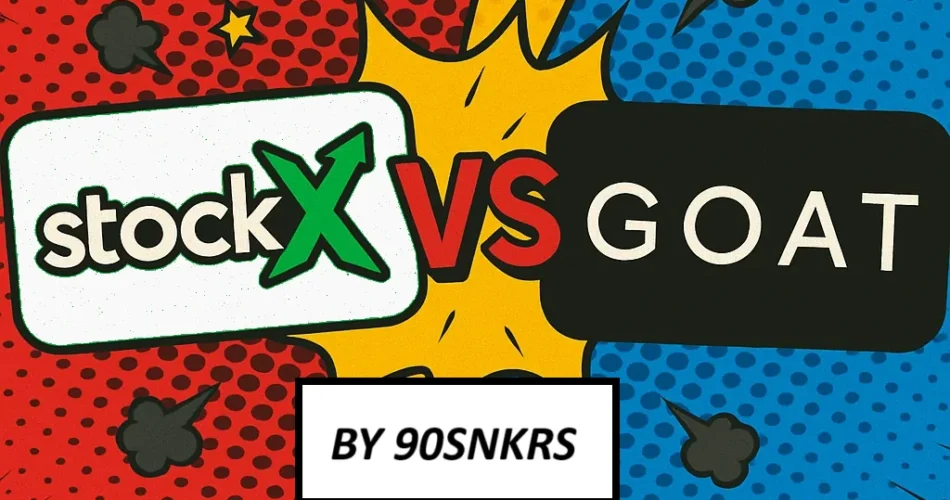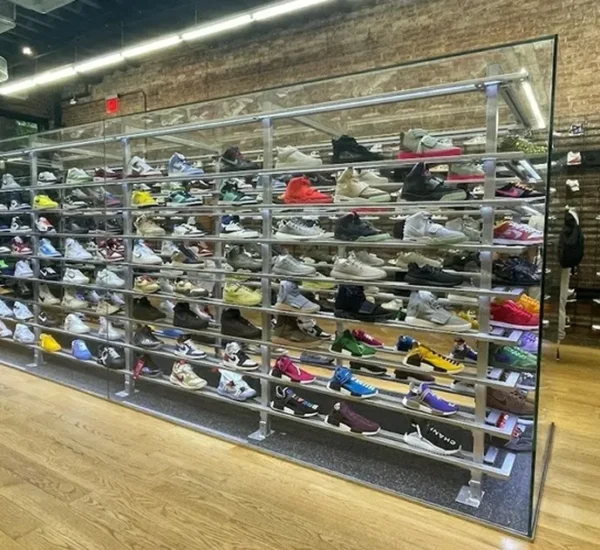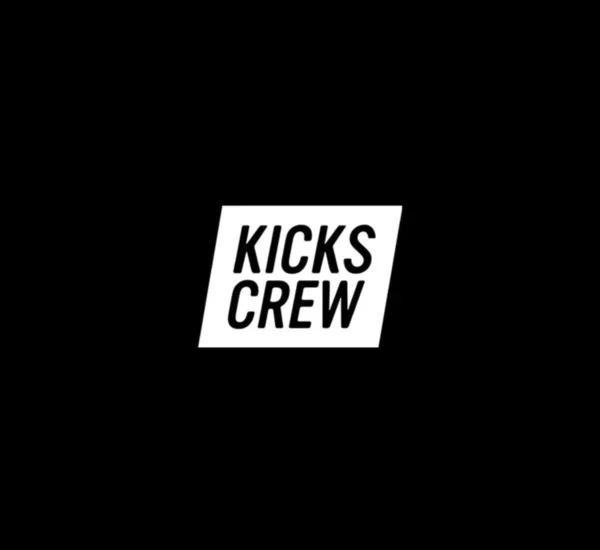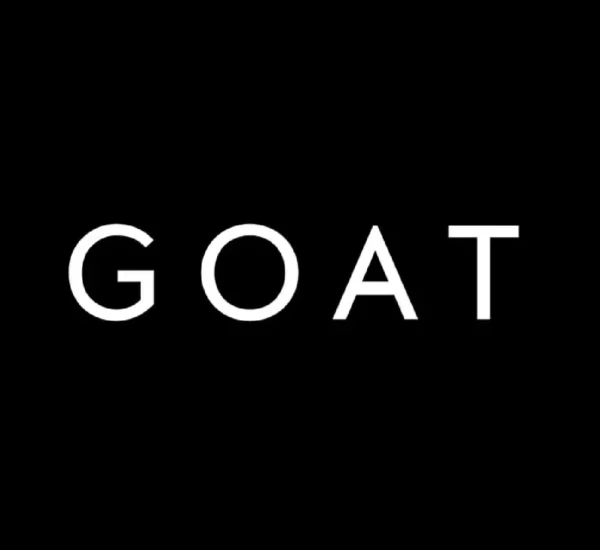Yo, sneakerheads! When it comes to copping those fire limited-edition kicks, the big question always pops up: GOAT or StockX: which one’s the real deal? These two platforms are straight-up titans in the sneaker resale game, but picking between them can feel like choosing between a fresh pair of Jordans or Yeezys. In this article, we’re diving deep into the GOAT vs StockX showdown—covering authentication, fees, shipping, and a real-world example with the iconic Nike Air Jordan 1 Retro High OG. Whether you’re a buyer, seller, or just curious, we’ve got you covered with all the juicy details, plus a cost comparison chart to seal the deal. Let’s lace up and get started!
Introducing StockX and GOAT: The Sneaker Resale Kings
If you’re wondering, “What are StockX and GOAT, anyway?” here’s the lowdown. Both are online sneaker resale platforms designed to make grabbing your dream pair as smooth as a fresh drop. Launched in 2015, StockX was founded by Dan Gilbert, Greg Schwartz, Josh Luber, and Chris Kaufman with a dope concept: a “stock market” for sneakers where prices fluctuate based on supply and demand. It’s not just kicks anymore—StockX now sells streetwear, bags, watches, collectibles, and even gaming consoles.
GOAT, also born in 2015, keeps it focused on sneakers, apparel, and accessories. No wild detours into other categories—they’re all about being the greatest (yup, it stands for Greatest of All Time). Both platforms operate fully online, which is clutch for convenience but might bum out folks who prefer in-store vibes. For me, though? Shopping from my couch with a guarantee of authenticity is the ultimate flex.
Are GOAT and StockX Legit? The Authentication Lowdown
One of the biggest worries when dropping stacks on sneakers is: “How safe are StockX and GOAT?” Nobody wants to get played with a fake pair of Dunks. Good news: both platforms have bulletproof authentication processes (GOAT vs StockX: authentication) to keep counterfeits at bay. Since sneakers come from third-party sellers, every pair gets rigorously checked before hitting your doorstep.
StockX uses a team of expert authenticators who inspect details like stitching, materials, box condition, and even the smell (yup, real sneakers have a distinct vibe). They’ve got authentication centers worldwide, and if an item fails the test, the order’s canceled, and you get a refund. GOAT takes it up a notch with a two-step process: AI-powered digital verification cross-references images against a massive database, followed by hands-on inspection for things like sole wear or tag authenticity. GOAT’s transparency about condition, especially for used sneakers, gives it a slight edge for peace of mind.
| Platform | Authentication Process | Key Checks |
| StockX | Expert human inspection | Stitching, materials, packaging, tags |
| GOAT | AI image analysis + human inspection | Digital database, condition grading, physical details |
The catch? This extra scrutiny can slow down shipping, which can feel like forever when you’re hyped for your new kicks. But trust me, it’s worth the wait to avoid a scam. So, are GOAT and StockX legit? Absolutely—buyer protection is their bread and butter.
Availability: Where Can You Shop StockX and GOAT?
Both platforms make it super easy to shop anytime, anywhere. StockX and GOAT are accessible via their websites or slick mobile apps for Android and iOS. Whether you’re chilling at home or sneaking a peek during a lunch break, you’re just a tap away from your next cop.
Download the Apps:
Websites:
- GOAT: https://www.goat.com/
- STOCKX: https://stockx.com/
Products: What Can You Cop on StockX vs GOAT?
When it comes to GOAT vs StockX: fake products, you don’t have to sweat it—both platforms are locked in on authenticity. But their catalogs? That’s where things diverge. GOAT is all about sneakers, apparel, and accessories, offering both new and used pairs. Want a budget-friendly pre-loved pair of Air Maxes? GOAT’s got you with detailed condition filters like “new,” “used – like new,” or “used – fair,” complete with close-up photos of any wear.
StockX, on the other hand, sticks to brand-new, deadstock (DS) items only. Beyond sneakers, they’ve got streetwear, luxury bags, watches, and collectibles like Pokémon cards or Funko Pops. If you’re hunting for a pristine, never-worn pair or something outside the sneaker realm, StockX’s broader inventory is a vibe. For used or budget kicks, though, GOAT’s your spot.
Which Platform Offers the Best Online Shopping Experience?
Let’s talk vibes: GOAT or StockX: which is better for browsing? GOAT’s interface is clean, intuitive, and beginner-friendly. You scroll, click, and cop—no fuss, no muss. It’s like window-shopping at your favorite sneaker boutique, but on your phone. The app’s curated selection and detailed product descriptions make it a breeze to find exactly what you want.
StockX feels more like Wall Street for sneakers. Its “stock market” setup with bids, asks, and price charts is dope for data nerds who love tracking market trends. But for newbies? It can be a bit overwhelming at first. Once you get the hang of it, though, sniping deals through bidding is straight-up thrilling. GOAT wins for simplicity, but StockX’s transparency is a flex for savvy shoppers. Check out the Jordan 1 example below to see how this plays out!
Buying Process: How Do StockX and GOAT Work?
So, GOAT or StockX for buying? Here’s how it goes down. On StockX, you’ve got two options: Buy Now for instant purchase at the lowest asking price or Place Bid to name your price and wait for a seller to bite. It’s a game of strategy—check out more at How to Buy on StockX. If your bid matches a seller’s ask, the deal’s done, and StockX authenticates before shipping. If the sneaker fails verification, you get a refund, no questions asked.
GOAT keeps it straightforward: pick your sneaker, pay the listed price, and you’re good. No bidding drama. GOAT also authenticates every pair, and if something’s off, your money’s back. One big perk? GOAT accepts returns within 3 days for inauthentic or misrepresented items (or store credit if you just change your mind). StockX? No returns unless the item’s defective or fake. For peace of mind, GOAT’s return policy is a game-changer.
What Are the Payment Options on StockX and GOAT?
In the StockX vs GOAT: buying fees battle, payment flexibility matters. StockX accepts multiple currencies (USD, AUD, CAD, EUR, GBP) and supports credit/debit cards, PayPal, and Affirm for installments (with interest). GOAT sticks to USD only but offers more options: credit/debit cards, PayPal, Apple Pay, Google Pay, Affirm, and Afterpay (interest-free). If you’re outside the US, StockX’s currency options are clutch, but GOAT’s variety of payment methods feels more modern and user-friendly.
Fees: Who’s Cheaper, StockX or GOAT?
Let’s talk cash: StockX vs GOAT: fees. StockX charges buyers a processing fee (8-9.5%, depending on your purchase history) plus shipping ($13.95 in the US, variable internationally). For a $200 sneaker, that’s about $16-$19 in fees, not counting shipping. Sellers pay a 10% transaction fee + 3% payment processing fee, which can eat into profits.
GOAT skips buyer processing fees, charging only shipping ($10 in the US, $30-$40 internationally). Sellers face a 9.5% commission + 2.9% cash-out fee, slightly lower than StockX. While StockX’s listed prices might look cheaper, fees can make the total cost similar or higher than GOAT’s. Pro tip: always calculate the final price (item + fees + shipping + taxes) before hitting “buy.” See our cost comparison chart for a real-world example!
Cost Comparison Chart: StockX vs GOAT
Let’s break it down with a visual. Below is a cost comparison for a Nike Air Jordan 1 Retro High OG (size 10, new condition) in the US, showing how fees and shipping impact the final price.
Note: Based on a $200 sneaker (Jordan 1). StockX: $200 + 9% fee ($18) + $13.95 shipping = $246.95. GOAT: $200 + $10 shipping = $240. Prices vary by sneaker and region.
Shipping: Does GOAT or StockX Deliver Faster?
What are the shipping times for StockX and GOAT? GOAT typically delivers in 7-10 business days, but their “Instant Ship” option (for pre-verified sneakers) can get your kicks to you in 3-7 days—sometimes as fast as 3 days in the US. Their “Order Progress” feature gives detailed tracking, so you’re never left guessing. StockX takes 7-12 business days, sometimes up to two weeks, due to authentication at their global centers. International buyers might wait longer, especially in regions like the UAE.
Shipping fees? GOAT’s $10 (US) or $30-$40 (international) is slightly cheaper than StockX’s $13.95 (US) or similar international rates. If you need your sneakers ASAP, GOAT’s speed and tracking win hands-down.
Customer Service: Who’s Got Your Back?
When things go sideways (like a damaged pair or a shipping snafu), you want support that’s got your back. StockX gets some shade on Reddit for slow or unhelpful customer service. No returns (unless the item’s fake or defective) and generic responses can frustrate users. GOAT shines here, with faster response times and a return policy that covers inauthentic items or buyer’s remorse (for store credit). If customer support is a dealbreaker, GOAT’s the safer bet.
What Are User Reviews Like for StockX and GOAT?
Scouring GOAT vs StockX Reddit 2025 threads, the community’s got opinions. StockX gets love for its authenticity and market data but catches heat for shipping delays and customer service. GOAT scores big for its sleek app, fast shipping, and responsive support, though some users gripe about higher prices. Both platforms have die-hard fans, so it’s about what vibes with you—data-driven deals or a smooth, stress-free cop.
Selling on GOAT vs StockX: Cashing In Your Kicks
Flipping sneakers? Selling on GOAT vs StockX has different vibes. StockX’s bidding system draws more buyers, especially for hyped drops, but its 10% transaction fee + 3% processing fee can sting. You set an ask or sell instantly at the highest bid—check out StockX’s Seller Guide. GOAT’s simpler: list your sneaker, set a price, and wait for a buyer. Their 9.5% commission + 2.9% cash-out fee is a bit friendlier, and you can sell used pairs, which StockX doesn’t allow.
Reddit sellers lean toward GOAT for ease and lower fees, but StockX’s larger audience can mean quicker sales for new, high-demand kicks. Want to maximize profits? Use a profit calculator (like the one we wish existed!) to compare net earnings after fees. For example, selling a $200 sneaker on StockX nets you ~$174 after fees, while GOAT nets ~$178.
International Buyers: StockX vs GOAT
For sneakerheads outside the US, StockX’s global reach is a major flex, shipping to over 200 countries. But watch out for customs duties, which can jack up costs (check your country’s import rules). GOAT’s international shipping is more limited, so availability depends on your region. Both platforms charge similar international shipping fees ($30-$40), but StockX’s multi-currency support (USD, AUD, CAD, EUR, GBP) makes it easier for non-US buyers. Always factor in duties and taxes before buying—nobody likes a surprise bill!
Hunting Rare Sneakers: Which Platform Wins?
Chasing that elusive collab or vintage pair? GOAT’s curated selection is a goldmine for rare and exclusive sneakers, especially with their used options. Their detailed photos and condition grades help you assess hard-to-find kicks. StockX’s broader inventory and price history charts are clutch for tracking rare items’ market value, making it easier to spot a deal. For ultra-rare drops, check both platforms—availability varies, and StockX’s data might give you an edge.

GOAT: Authenticity, Sneakers and Streetwear. Is it worth it?

Is Stadium Goods Legit? Your Guide to the Sneakerhead Haven
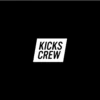
Is Kikscrew legit? Discover the truth about this sneaker buying platform

Nike x Off-White: The Collaboration That Revolutionized Sneakers and Fashion

Sneaker Stores in New York: The Ultimate Guide to Finding Your Perfect Pair
Real-World Example: Buying a Nike Air Jordan 1 Retro High OG
Let’s get practical. Say you’re eyeing a Nike Air Jordan 1 Retro High OG (size 10, “Chicago” colorway, new condition). Here’s how it shakes out on both platforms (prices as of June 2025, US-based):
- StockX: Listed at $200 (lowest ask). Add 9% processing fee ($18) + $13.95 shipping = $231.95 total. Shipping takes 7-12 days. No returns unless defective.
- GOAT: Listed at $210 (new) or $180 (used, “like new”). Add $10 shipping = $220 (new) or $190 (used). Instant Ship delivers in 3-7 days. Returns allowed within 3 days.
Verdict: GOAT’s cheaper for used pairs, and new pairs are competitive with faster shipping. StockX might score a deal if you bid low, but fees add up. Check the chart above for a visual breakdown!
GOAT vs StockX: The Ultimate Comparison Table
| COMPARISON: | STOCKX | GOAT |
| Ease of purchase | ❌ | ✔️ |
| New and used sneakers | ❌ | ✔️ |
| Shipping speed | ❌ | ✔️ |
| Accepts returns | ❌ | ✔️ |
| Bidding option (BID) | ✔️ | ❌ |
| Item variety | ✔️ | ❌ |
| Payment options | ✔️ | ✔️ |
| Customer service | ❌ | ✔️ |
| International reach | ✔️ | ❌ |
| Used sneaker transparency | ❌ | ✔️ |
Conclusion: Which Is the Best Platform for Sneakers?
Buying sneakers online is a whole vibe, and GOAT and StockX make it easier than ever to score your grails. So, which is better: StockX or GOAT? If you’re into a dynamic, data-driven marketplace and only want brand-new kicks, StockX is your jam. Its bidding system and global reach are perfect for deal-hunters and international buyers. But if you crave simplicity, faster shipping, and the option for used sneakers, GOAT steals the show with its sleek app, return policy, and responsive support.
For me, GOAT edges out slightly for its user-friendly vibe and flexibility, but it’s all about what you prioritize—deals, speed, or variety. Both platforms are legit, so you can’t go wrong. Just do your homework, compare total costs (like in our chart), and check the condition of older pairs to avoid surprises.
Key Tip: Be cautious with sneakers over 5 years old on GOAT or StockX. Time can cause natural wear, like hydrolysis, which can make soles crumbly. Always check the condition!
90 Sneakers Team
FAQ: Your Burning Questions About StockX vs GOAT
- Are GOAT and StockX legit?
- Where can I shop StockX and GOAT?
- What products do StockX and GOAT sell?
- Which platform has a better shopping experience?
- How does buying work on StockX vs GOAT?
- What payment options do StockX and GOAT offer?
- Which platform has lower fees?
- Which platform ships faster?
- Which platform has better customer service?
- What do users say about StockX and GOAT?
- How does selling work on StockX vs GOAT?
- Which is better for international buyers?
- Which platform is better for rare sneakers?
- How do StockX and GOAT authenticate sneakers?
- Do StockX and GOAT accept returns?
- How does StockX’s bidding system work?
- Which platform has more sneaker availability?
- What’s GOAT’s “Order Progress” feature?
- How does StockX work as a “sneaker stock market”?
- Which platform has better prices?
- What currencies do StockX and GOAT accept?
- Can I buy used sneakers on StockX or GOAT?
- Is it safe to buy sneakers on StockX and GOAT?
- Which platform is better for high-demand drops?
- How do customs fees work for international buyers?
- How transparent is GOAT about used sneaker conditions?
- Which platform is better for seller profits?
- How do I resolve issues with StockX or GOAT?
- Are StockX and GOAT good for sneaker investment?
- What’s the environmental impact of buying on StockX or GOAT?
How Do StockX and GOAT Authenticate Sneakers?
StockX uses expert authenticators to check details like stitching, materials, and packaging. GOAT combines AI image analysis with hands-on inspection, ensuring every pair is legit. Both refund you if an item fails verification.
Do StockX and GOAT Accept Returns?
GOAT allows returns within 3 days for inauthentic or misrepresented items, or store credit for buyer’s remorse. StockX only accepts returns for defective or fake items—no exceptions.
How Does StockX’s Bidding System Work?
StockX’s “Place Bid” lets you name your price; if a seller accepts, the deal’s done. Or use “Buy Now” for instant purchase at the lowest ask. GOAT skips bidding for fixed prices.
Which Platform Has More Sneaker Availability?
Both offer tons of sneakers, but StockX’s broader inventory (including non-sneaker items) gives it a slight edge. GOAT’s curated selection shines for exclusive or used pairs.
What’s GOAT’s “Order Progress” Feature?
GOAT’s “Order Progress” tracks your order from purchase to delivery with detailed updates. StockX offers tracking, but it’s less granular.
How Does StockX Work as a “Sneaker Stock Market”?
StockX’s prices shift based on supply and demand, like stocks. Buyers bid, sellers set asks, and deals happen when prices match, creating a dynamic marketplace.
Which Platform Has Better Prices?
StockX’s bidding can score lower prices, but fees (8-9.5%) add up. GOAT’s used sneakers and no buyer fees can be cheaper, depending on the pair. Compare total costs in our chart!
What Currencies Do StockX and GOAT Accept?
StockX accepts USD, AUD, CAD, EUR, and GBP. GOAT only takes USD, which might limit international buyers.
Can I Buy Used Sneakers on StockX or GOAT?
GOAT sells both new and used sneakers with condition filters. StockX sticks to new, deadstock pairs only.
Is It Safe to Buy Sneakers on StockX and GOAT?
Both are safe, with authentication and buyer protection ensuring legit sneakers in good condition. Refunds are guaranteed if verification fails.
Which Platform Is Better for High-Demand Drops?
StockX’s bidding and market data make it great for sniping hyped drops like Yeezys. GOAT’s Instant Ship can deliver faster, but availability varies.
How Do Customs Fees Work for International Buyers?
Both platforms charge international shipping ($30-$40), but customs duties depend on your country’s laws. Check import rules to avoid surprise fees.
How Transparent Is GOAT About Used Sneaker Conditions?
GOAT provides detailed photos and condition grades (“new,” “used – like new,” “used – fair”). StockX doesn’t sell used sneakers, so no comparison here.
Which Platform Is Better for Seller Profits?
GOAT’s lower fees (9.5% + 2.9%) and used sneaker market can yield better profits. StockX’s 10% + 3% fees hurt more, but its larger audience can sell faster.
How Do I Resolve Issues with StockX or GOAT?
Contact support via the app or website with order details and photos. GOAT’s faster responses and return policy make disputes easier. StockX requires proof of defect or inauthenticity. Try this template: “Hi [Platform], my order #[number] arrived [issue, e.g., damaged]. Attached are photos. Please advise on next steps.”
Are StockX and GOAT Good for Sneaker Investment?
StockX’s price charts help track resale value, ideal for investors. GOAT’s rare and used options offer unique opportunities, but research market trends before diving in.
What’s the Environmental Impact of Buying on StockX or GOAT?
Resale extends sneaker lifecycles, reducing waste. But international shipping and packaging add emissions. GOAT’s used sneakers promote sustainability more than StockX’s new-only model.
Conclusion: Your Ultimate Sneaker Quest Ends Here!
Alright, sneakerheads, we’ve gone full court in the StockX vs GOAT showdown, breaking down everything from authentication to fees, shipping, and even a fire Nike Air Jordan 1 cop comparison. Whether you’re chasing that pristine, deadstock vibe with StockX’s stock market swagger or vibing with GOAT’s sleek app, fast shipping, and used sneaker steals, both platforms are legit MVPs in the sneaker resale game. The real question? What’s your flex—sniping deals with StockX’s bids or keeping it chill with GOAT’s hassle-free checkout?
Our cost comparison chart and Jordan 1 breakdown show GOAT often edges out for speed and savings, especially if you’re open to pre-loved kicks. But StockX’s global reach and data-driven deals make it a beast for international buyers and hypebeasts hunting rare drops. No matter your pick, do your homework: check total costs, peep condition details, and avoid those crumbling soles on older pairs. With these platforms, your grail is just a click away, guaranteed authentic and ready to stunt.
Pro Move: Compare prices on both platforms before you cop—use our chart as your guide to score the freshest deal and flex those kicks with zero regrets!
90 Sneakers Team
So, what’s the move? Hit up StockX or GOAT, cop your dream pair, and join the sneaker culture revolution. Share this guide with your crew to help them pick their platform, and let us know in the comments which site’s your go-to for that ultimate sneaker score. Lace up, level up, and keep chasing those heat-dropping moments—your next iconic pair is waiting!

GOAT: Authenticity, Sneakers and Streetwear. Is it worth it?

Is Stadium Goods Legit? Your Guide to the Sneakerhead Haven

Is Kikscrew legit? Discover the truth about this sneaker buying platform

Nike x Off-White: The Collaboration That Revolutionized Sneakers and Fashion


